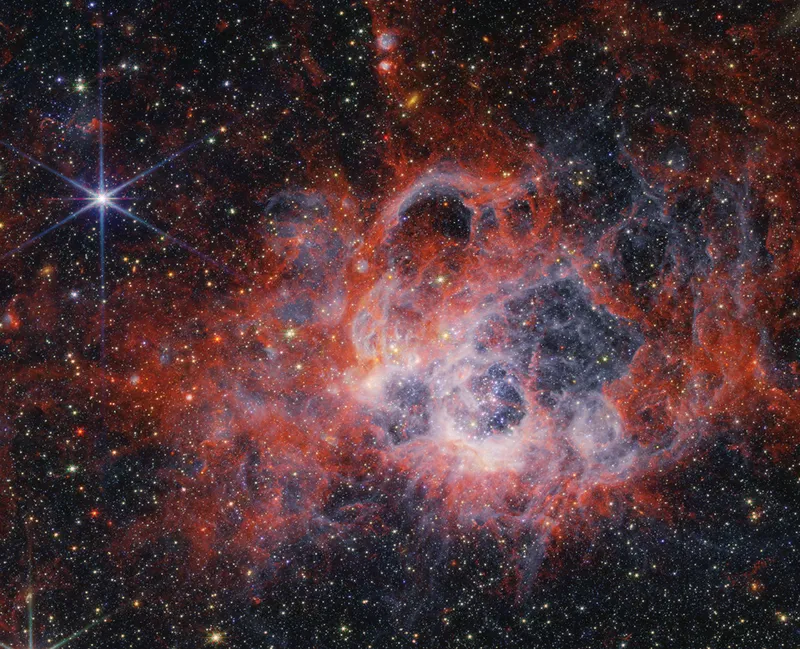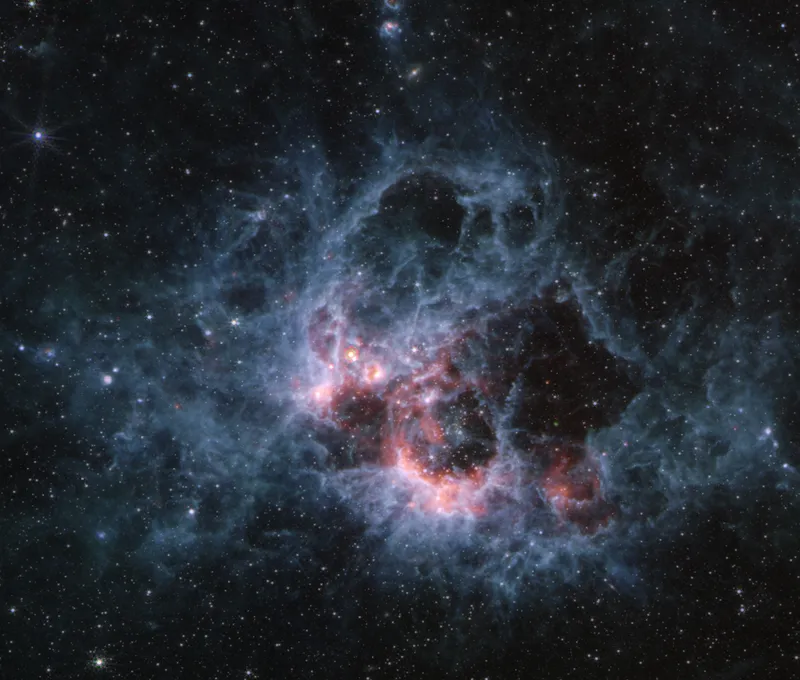The James Webb Space Telescope has captured a beautiful image of a star forming region within the spiral Triangulum Galaxy.
Two infrared images have been released: one captured with Webb's NIRCam (Near-Infrared Camera), and one with the MIRI (Mid-Infrared Instrument).
The Triangulum Galaxy is located 2.73 million lightyears from Earth, and within it lies NGC 604, a region of chaotic and violent starbirth.

NGC 604 is thought to be about 3.5 million years old and stretches 1,300 lightyears across.
The region contains over 200 of the hottest, most massive types of stars, all still relatively young.
The stars in question are B-type and O-type stars, the latter of which can be over 100 times the mass of our Sun.
Dusty regions of space like this one in the Triangulum Galaxy can be difficult to study in visible light, as optical telescopes can’t peer through the cosmic dust.
But the Webb Telescope’s infrared view of the Triangulum Galaxy enables astronomers to peer through the dust and get a closer look.

Webb’s NIRCam view of the Triangulum Galaxy region shows bright red dusty tendrils and clumps of emission.
Streams of charged particles from the young stars, known as stellar winds, carve out the cavities seen in the image, while their ultraviolet radiation ionises the surrounding gas, appearing white and blue.
Orange streaks in the NIRCam image indicate carbon-based molecules known as polycyclic aromatic hydrocarbons, which plays a key role in the formation of stars and planets, but its origin is a mystery.
Webb's view of NGC 604 also shows two bright young stars carving out holes in dust, just above the central nebula.

Astronomers have also noticed there are fewer stars in Webb's MIRI image of NGC 604 (above), because hot stars emit less light at MIRI's wavelengths.
Conversely, in the MIRI images, larger clouds of cooler dust and gas glow, showing how Webb's NIRCam and MIRI instruments can work in tandem to reveal a more complete picture of a targeted region.
